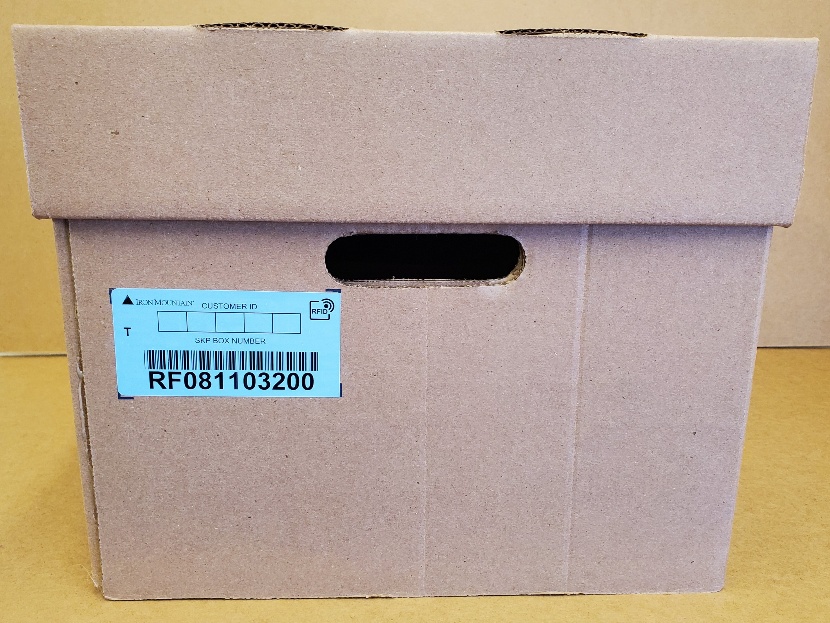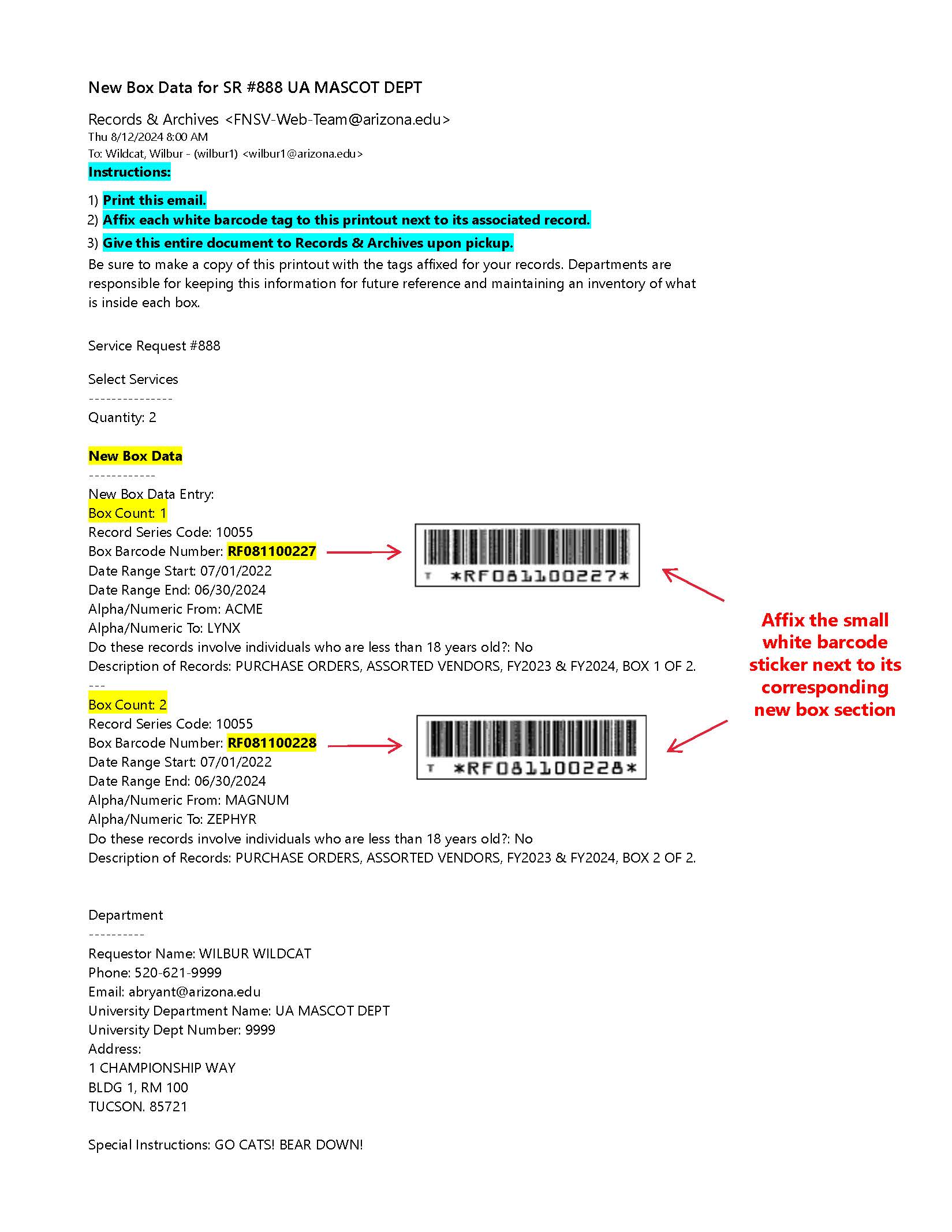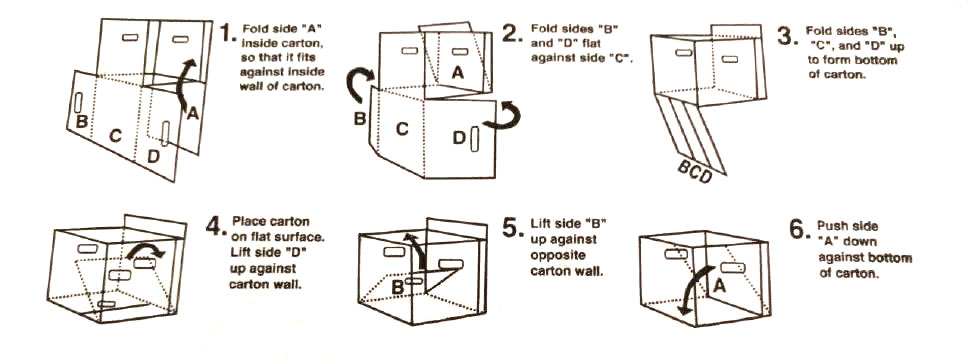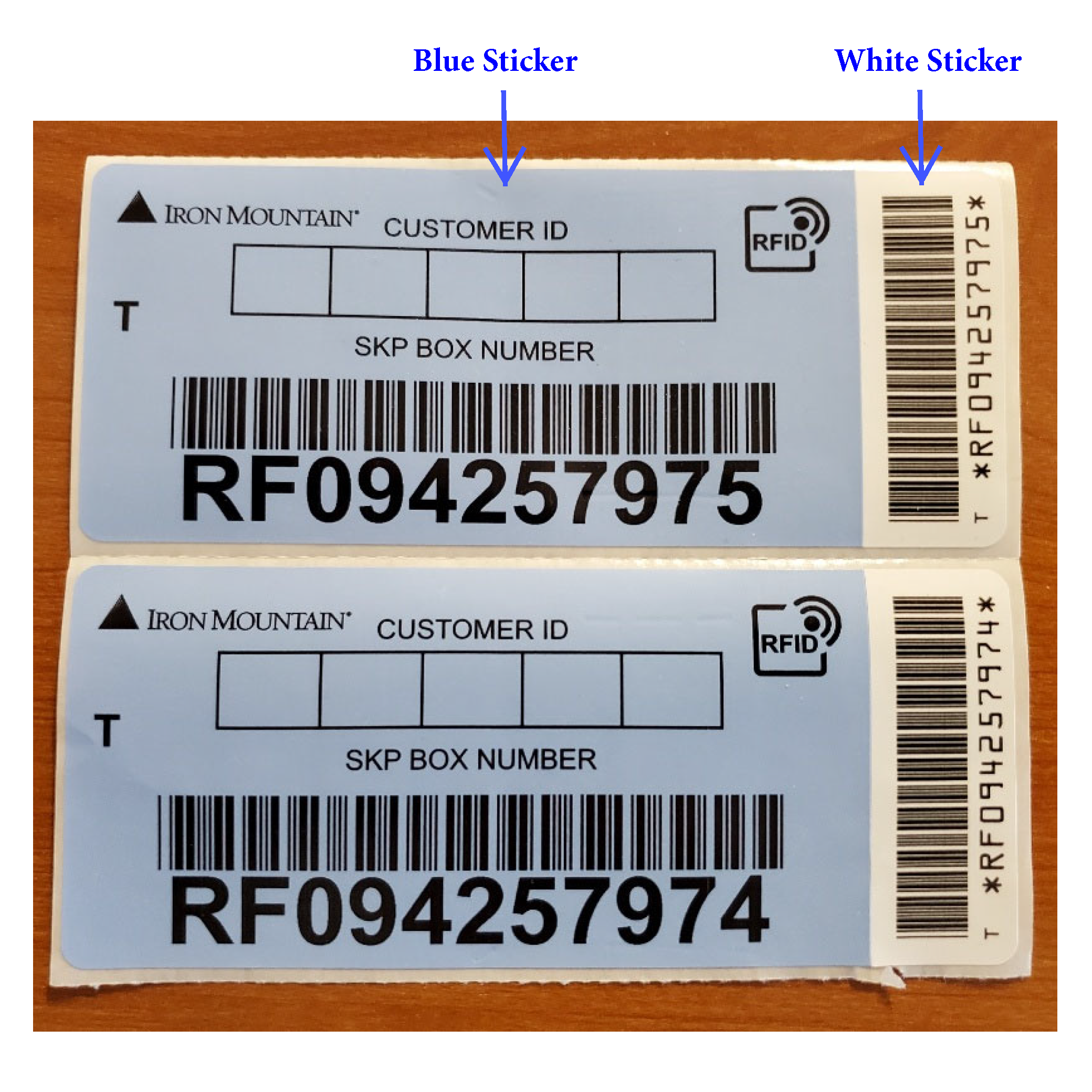For Digital/Electronic Records, only steps 1 & 2 on this page apply. See the Digital Records and Destruction pages for additional information or contact us if you have any questions.
Important updates effective January 1, 2023
The retention schedules used by the University have been updated. Please visit the Retention Schedules page for more information. Contact us if you need assistance identifying which new record series codes to use for your records.
In order for a record to be accepted for retention storage, it must be able to begin serving its predetermined retention period so an accurate retention completion date can be calculated. Therefore, a record that is still considered active or is not ready to begin serving its predetermined retention period because it does not meet the retention eligibility requirements found on the retention schedules used by the University will no longer be accepted for retention storage.
1) Determine if you have Official Records or Non-records
Official records are eligible for storage. Non-records are not. Records & Archives records retention policies apply to all official records generated by the University including paper, digital, or any other media.
Note: Records & Archives does not accept records for storage that have completed their retention requirement or have a retention requirement of two years or less (either total or remaining). See Destruction of Records for more information about how to process these types of records once their retention requirements have been fulfilled or contact us if you have any questions.
2) Determine Record Series Code Numbers
The records you wish to store will be associated with a record series code number. Organize your records by type so only the same types of records are stored together. Records boxes can only be assigned one record series code number. Boxes with mixed records series codes will not be accepted. If you need assistance with this step, contact us to obtain the proper information. Be sure to include the following, if possible: The name of the record, the origins of the record, the function of the record, and the primary type of information found on the record.
3) Request Boxes and Barcode Labels
Submit a Service Request for new empty boxes and barcode labels. These items are provided at no cost. Estimate the number of boxes and barcode labels needed based on the following information: Record boxes are 15" long x 12" wide x 10" tall, and each box requires its own barcode. Each barcode label set consists of a large blue Iron Mountain barcode label that goes on the box and a small white barcode tag that goes on the on the confirmation email you are required to print (the printing instructions are on the confirmation email; see Section 5 below). Include any special delivery instructions, if needed.
Please note:
- The blue Iron Mountain barcode labels are the only approved barcode labels in use at this time. See Section 5 below to view an example. Request new barcode labels if you need them to complete your records storage project and discard all other previously issued non-Iron Mountain white barcode labels.
- Records boxes provided by Records & Archives are for housing official University of Arizona records while they are being stored for retention purposes only. Misuse of these boxes is not authorized.
- If different records box types or sizes are needed other than the type of records box provided by Records & Archives (standard single wall records box with lid, 200 lb. test corrugated, 15" long x 12" wide x 10" high), it is the department’s responsibility to furnish them.
- Records boxes need to be professional made, cannot be modified in any way, should be properly assembled (and sealed if the box does not come with a pre-made lid), and should be filled to capacity.
- Select the box types or sizes that best align with the length of the retention period and the frailty of the records.
- The minimum cardboard quality needs to be 200 lb. test corrugated.
- For large maps, blueprints, drawings, etc., that can be rolled up, use boxes specifically designed for these purposes, such as a 40” x 6” x 6” size box, or similar (round tubes are not authorized for retention storage). For x-rays, etc., use boxes specifically designed for these types of media.
- Contact Records & Archives for assistance with selecting records storage boxes.
4) Pack the Boxes
Assemble the boxes and pack the records in a logical and organized fashion (alphabetical, numerical, etc.), with all records facing the same direction. Please note:
- Boxes should be constructed following the instructions above. If tape is necessary, the construction is incorrect.
- Boxes should be filled to capacity so they are able to withstand being compressed; use filler materials as necessary.
- Boxes should not be overstuffed and the lids must be able to make full contact with the box.
- The handholds on the box ends must be accessible and free of obstructions.
- Improperly constructed, underfilled, or overstuffed boxes will not be accepted.
- Hanging folders should not be hung on the sides of boxes.
- Boxes with binders that extend past the 10" height will not be accepted.
- Limit the pick-up size to no more than 18 boxes at one time, when possible. Contact Records & Archives to make special arrangements for larger pick-ups.
All boxes are subject to inspection at the time of pick-up to ensure the boxes are properly packed. Improperly packed boxes may be left at the pick-up location and the pick-up rescheduled. Records & Archives will provide additional supplies, as needed.
Note: Departments are responsible for preparing and maintaining an inventory of the Records sent to storage as well as their corresponding Record box tracking information so Records can be located if necessary. The degree of detail in the inventory is dependent upon the needs of the department.
5) Submit New Box Data
Submit a Service Request for "Pick-up New Boxes Ready for Storage." Include any special pick-up instructions, if needed. New box data must include the record series code, box barcode number, date range, alphabetical or numerical range (if applicable), a brief description of the records, and answers to the questions about records pertaining to minors.
To add multiple storage boxes, click the green "+" button located at the bottom of the data entry screen to add your next box.
Once you submit the request you will receive a confirmation email containing the new box data you provided. Print this New Box Data confirmation email so it can be given to Records & Archives when the boxes are picked up. Affix the large blue barcode label to the proper location on the records box, and the matching small white barcode tag to the printed confirmation email next to its corresponding new box data section. Leave the CUSTOMER ID section on the blue label blank.
See the following examples for clarification. Contact us if you have any questions.
Examples: Barcode Label Set | Blue Barcode Placement on Box | White Barcode Placement on Printed Email
Records & Archives will schedule a pick-up once the data has been verified and entered.
6) Prepare for Pick-up
Make a copy of the New Box Data confirmation email with the small white barcode tags attached. Give the printed original to Records & Archives personnel upon pick-up and keep the copy for your records. Departments are responsible for knowing what has been sent to Records & Archives in the event the boxes or individual files need to be recalled. Be sure the boxes are readily available and located in an area that is accessible for pick-up with a flat 4' x 2' hand truck.




